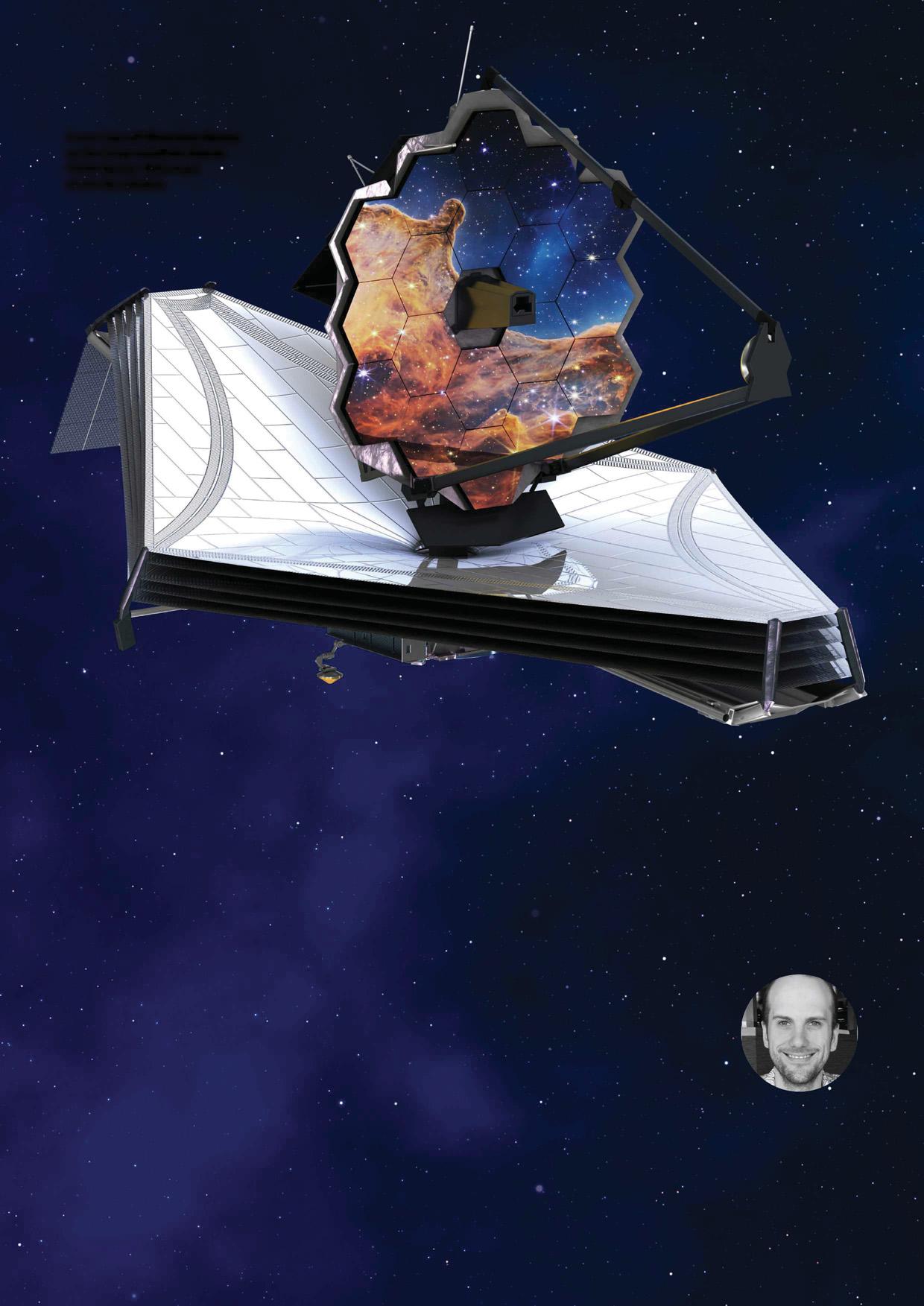JWST begins its SCIENCE JOURNEY

Colin Stuart (@skyponderer) is an astronomy author and speaker. Get a free e-book at colinstuart.net/ ebook
A single galaxy 13.1 billion years old is picked out of a field of hundreds and its light signature recorded by Webb's NIRSpec instrument, a tool so sensitive it can mine information simultaneously from up to 150 individual galaxies that existed in the very early Universe
What do the first stars look like?
JWST will take us back to when the very first galaxies appeared
Astronomers are always looking back into the past. That's because it takes time for light to travel across the Universe. We don't see things as they are when the light arrives here, but as they were when the light first departed. For distant galaxies, the delay is millions and even billions of years.
So very distant galaxies were also some of the first galaxies to form in the Universe. The Hubble Space Telescope revolutionised this area of research, finding thousands of distant galaxies in a patch of sky so tiny that it could be covered by a grain of sand held at arm's length.
The light from the most distant galaxy observed before JWST - HD1 - took a staggering 13.1 billion years to reach Earth. Astronomers are peering back to a time just 700 million years after the Big Bang. Yet they want to look back even further to when the very first stars and galaxies appeared, estimated to be 100-200 million years after the Big Bang. They're hunting the first light that lit up the so-called cosmic dark ages.
Hubble just isn't up to that task - you need an entirely different kind of telescope. Enter JWST, which gathers infrared light instead of the visible light to which our eyes, and Hubble, are sensitive. Infrared light is able to penetrate the dust that can sometimes block our view of distant galaxies.
この記事は BBC Sky at Night Magazine の September 2022 版に掲載されています。
7 日間の Magzter GOLD 無料トライアルを開始して、何千もの厳選されたプレミアム ストーリー、9,500 以上の雑誌や新聞にアクセスしてください。
すでに購読者です ? サインイン
この記事は BBC Sky at Night Magazine の September 2022 版に掲載されています。
7 日間の Magzter GOLD 無料トライアルを開始して、何千もの厳選されたプレミアム ストーリー、9,500 以上の雑誌や新聞にアクセスしてください。
すでに購読者です? サインイン

Q&A WITH A DWARF GALAXY HUNTER
The Euclid space telescope has only just begun its six-year-long mission to map the night sky, but it's already revealed a treasure trove of new galaxies

SKILLS FOR STARGAZERS
Get the best from your astro camera

Space myths BUSTED
From frozen astronauts to rampaging black holes, Alastair Gunn debunks 10 things you thought you knew about space

RVO Horizon 8-inch f/4 imaging Newtonian
Want to photograph large nebulae and galaxies? This big, fast scope is no slouch

ZWO Seestar S30 smart telescope
Sure to tempt beginners, the S50's tiny sibling is afforable, super-simple and great fun

Out of this World and Into the Next
Where do we come from? Who are we? Where are we going? These are fundamental and profound questions that encompass the whole of human existence.

Demystifying the Moon illusion
An apparently supersized Moon low on the horizon fools the eye... but not the camera

CUTTING EDGE
Mars's largest moon may have risen from the ashes of a previous satellite

Trump takes aim at NASA funding
A draft proposal from the US presidential budget shows severe cuts to planetary science

Zombie galaxies live again
Seemingly dead galaxies apparently burst back to life and form new stars
